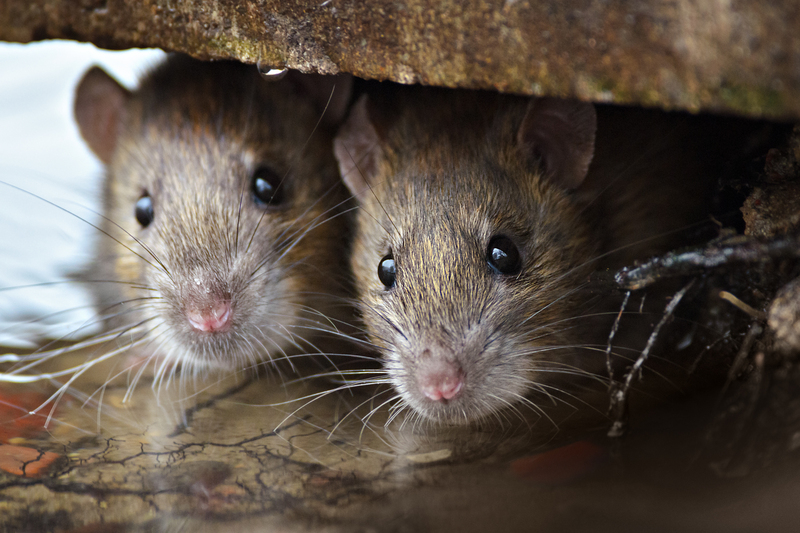Discover How to Easily Dissolve Burnt-On Stovetop Residue
Posted on 25/06/2025
Discover How to Easily Dissolve Burnt-On Stovetop Residue
If you've ever cooked a delicious meal only to find stubborn, burnt-on residue stuck to your stovetop, you know how frustrating it can be. Whether you have a gas, electric, or glass cooktop, removing these tough stains can seem daunting. The good news is, you don't have to spend hours scrubbing or use harsh chemicals. In this comprehensive guide, you'll discover how to easily dissolve burnt-on stovetop residue with proven methods, expert advice, and eco-friendly solutions.
Why Is Burnt-On Stove Residue So Difficult To Remove?
Understanding the science behind burnt-on messes can help you tackle them more effectively. When food spills or boils over, it cooks on high heat and sticks firmly to the stove surface. Over time, this residue carbonizes, becoming brittle yet tenaciously bonded to the cooktop.
- High-heat cooking causes food sugars and fats to caramelize and harden.
- Repeated heating bakes residue more deeply into the surface.
- Glass and enamel surfaces are particularly prone to visible scorch marks and discoloration.
The key to easily dissolving burnt-on stovetop residue is to break down these stubborn compounds without damaging your stove.

Safety First: Preparing for Stovetop Cleaning
Before cleaning your stovetop, always take a few precautions:
- Switch off the stove and allow all surfaces to cool completely.
- Ventilate the room if you're using stronger cleaning products.
- Gather essential tools: soft cloths, non-abrasive sponges, a razor scraper (for glass), and gloves to protect your hands.
The Best Products for Dissolving Stubborn Stovetop Residue
Choosing the right cleaning agent is crucial. Here are tried-and-tested cleaners for burnt-on stove residue:
1. Baking Soda and Vinegar Solution
Baking soda is a mild abrasive and natural deodorizer, while vinegar dissolves mineral and grease stains.
- Sprinkle a generous layer of baking soda over the burnt residue.
- Spray or pour white vinegar over the baking soda.
- Allow the solution to fizz and sit for 15-30 minutes.
- Wipe clean with a damp, non-abrasive cloth.
2. Commercial Ceramic Stovetop Cleaners
Brands like Bar Keepers Friend or Weiman Stove Cleaner are formulated specifically for glass and ceramic cooktops. They dissolve tough, burnt-on residue quickly and leave a streak-free shine.
3. Dish Soap and Hot Water Paste
Sometimes, all you need is a concentrated mixture of dish soap and very hot water.
- Mix hot water with a few drops of dish soap to form a thick paste.
- Apply to the crusted areas and let it soak for 20 minutes.
- Gently scrub with a soft cloth or sponge.
4. Lemon Juice and Salt
For a naturally fresh and powerful clean, sprinkle salt over the residue, cover with lemon juice, and let the citric acid do the work.
- The salt acts as a gentle scrubber; lemon juice dissolves grease and burnt-on food.
5. Hydrogen Peroxide and Baking Soda
For especially stubborn stains, combine baking soda with a small amount of hydrogen peroxide. Let the paste sit on the affected area for up to 30 minutes before gently scrubbing.
Step-By-Step: How to Easily Dissolve Burnt-On Stovetop Residue
Ready to put these solutions into action? Here's a step-by-step guide that will leave your stovetop sparkling and residue-free:
- Remove loose debris: Using a soft brush or dry cloth, sweep away any crumbs or loose bits.
- Apply your chosen cleaner: Use one of the above homemade or commercial solutions, making sure it fully covers the burnt area.
- Let it soak: Patience is vital! Give the solution enough time to penetrate and loosen the tough residue.
- Gently scrub: Use a non-abrasive sponge or microfiber cloth to avoid scratching the surface. For glass stovetops, a razor blade held at a 45-degree angle can be used to carefully scrape up softened debris.
- Wipe clean: Use a clean, damp cloth to remove any linger cleaner and loosened residue.
- Buff and polish: For a streak-free finish, dry and buff the surface with a soft, lint-free towel.
How to Remove Burnt-On Residue From Different Types of Stovetops
Glass and Ceramic Cooktops
- Use a razor scraper only if permitted by the manufacturer.
- Avoid powder abrasives that might scratch the surface.
- Buff with vinegar and a microfiber cloth for a glossy finish.
Gas Stovetops (Enamel or Metal Grates)
- Remove grates and soak them in a vinegar and dish soap solution while you clean the main surface.
- Use baking soda paste to tackle stuck-on spills around the burners.
- Scrub grates with a stiff nylon brush and rinse thoroughly.
Electric Coil Stovetops
- Unplug and remove the coils before cleaning.
- Clean drip pans with a baking soda and vinegar paste, soaking if necessary.
- Never immerse coils in water; instead, wipe with a damp cloth after surface cleaning.
Eco-Friendly and Non-Toxic Cleaning Solutions
If you prefer to avoid harsh chemicals, you can easily dissolve burnt-on stovetop residue using natural ingredients:
- White vinegar cuts through grease and is safe for most cooktops.
- Lemon juice is both a disinfectant and a natural de-greaser.
- Baking soda provides gentle abrasion without scratching surfaces.
- Salt acts as a non-toxic scouring agent for tougher areas.
Preventing Future Burnt-On Stovetop Stains
Prevention is always better than cure. With regular care and some simple habits, you'll reduce the chances of residue building up.
- Wipe spills immediately: Even small splatters should be wiped away as soon as the cooktop cools.
- Use stovetop protectors: Silicone mats or liners catch spills before they hit the surface (ideal for gas ranges).
- Clean burners and grates regularly: Soak and scrub burners and grates every week to prevent buildup.
- Avoid overheating empty pots: Overheated cookware is more likely to result in scorched spills.
Common Mistakes to Avoid When Cleaning Burnt-On Stovetop Residue
- Using steel wool or abrasive pads: These can scratch and permanently damage surfaces, especially on glass or ceramic stovetops.
- Applying cleaner to a hot cooktop: This can cause steam burns or weaken the effectiveness of your cleaning agent.
- Neglecting to rinse thoroughly: Leftover cleaner can cause streaks and may even damage surfaces over time.
- Forgetting manufacturer's recommendations: Always double-check what your stove manufacturer recommends for cleaning.
Expert Tips for Maintaining a Spotless Stovetop
- For daily cleaning, wipe down with a damp microfiber cloth and a few drops of dish soap.
- For weekly cleaning, use a vinegar spritz followed by a dry polish with a soft towel.
- For deep cleaning, use the baking soda and vinegar method monthly, or whenever you see stubborn residue.
- For persistent stains, repeat the soaking and scrubbing process as many times as needed--patience will pay off!
- Always dry thoroughly to avoid water spotting or streaking on glass and metal surfaces.
When to Call a Professional Cleaner
- Stains that do not respond to repeated cleaning may require a professional's touch.
- If you have specialty surfaces (such as induction cooktops with integrated controls), consider professional cleaning to avoid warranty issues.
- Unusual odors, discoloration, or damage after cleaning may indicate a need for expert assessment.

Frequently Asked Questions About Dissolving Burnt-On Stove Top Residue
1. How often should I clean my stovetop?
For best results, wipe after every use, with a deep clean to dissolve burnt-on stovetop residue at least once a month--or as soon as spills occur.
2. Can I use bleach to remove burnt-on residue?
Bleach is generally not recommended, especially on glass or ceramic stovetops. It may discolor surfaces and can be hazardous when mixed with other cleaners.
3. What's the safest way to use a razor blade scraper?
Hold the blade at a 45-degree angle and apply light, even pressure. Never use excessive force, and check your manufacturer's guidelines before scraping.
4. Are there stovetop cleaners specifically for induction cooktops?
Yes, many commercial products are labeled safe for induction or glass cooktops. Read labels carefully and steer clear of abrasives.
5. Can I prevent stains by covering my burners?
You can use heat-resistant mats for gas burners, but avoid covering electric coils or glass surfaces, which can get dangerously hot.
Conclusion: Enjoy a Gleaming, Burnt-Free Stovetop
With the right approach, easily dissolving burnt-on stovetop residue is not only achievable but can become routine. Remember, timely cleaning with effective yet gentle solutions prevents buildup, protects your appliance, and leaves your kitchen sparkling. Whether you prefer commercial products or eco-friendly alternatives, these tips and techniques ensure your stovetop stays spotless, safe, and ready for culinary adventures.
Start today--apply these strategies, avoid common pitfalls, and transform your stovetop cleaning routine for good. Your stove will thank you, and so will every meal you create!




